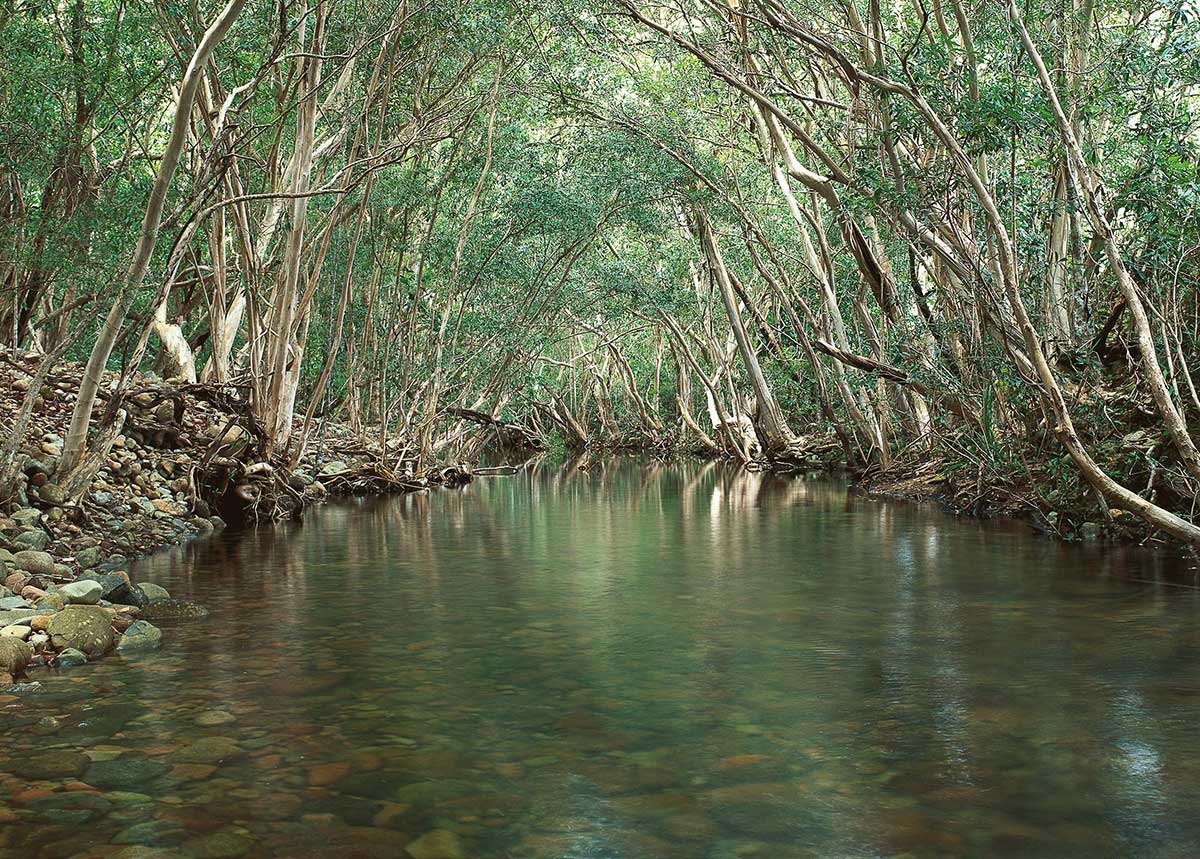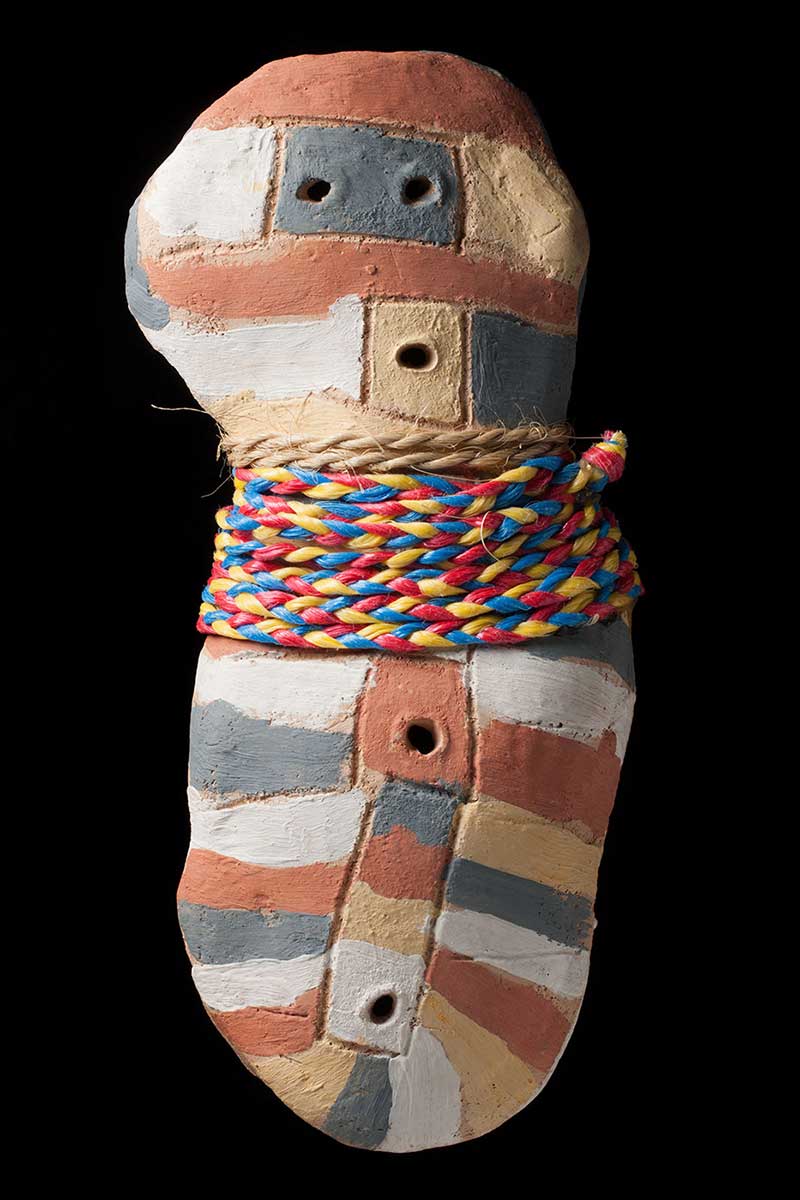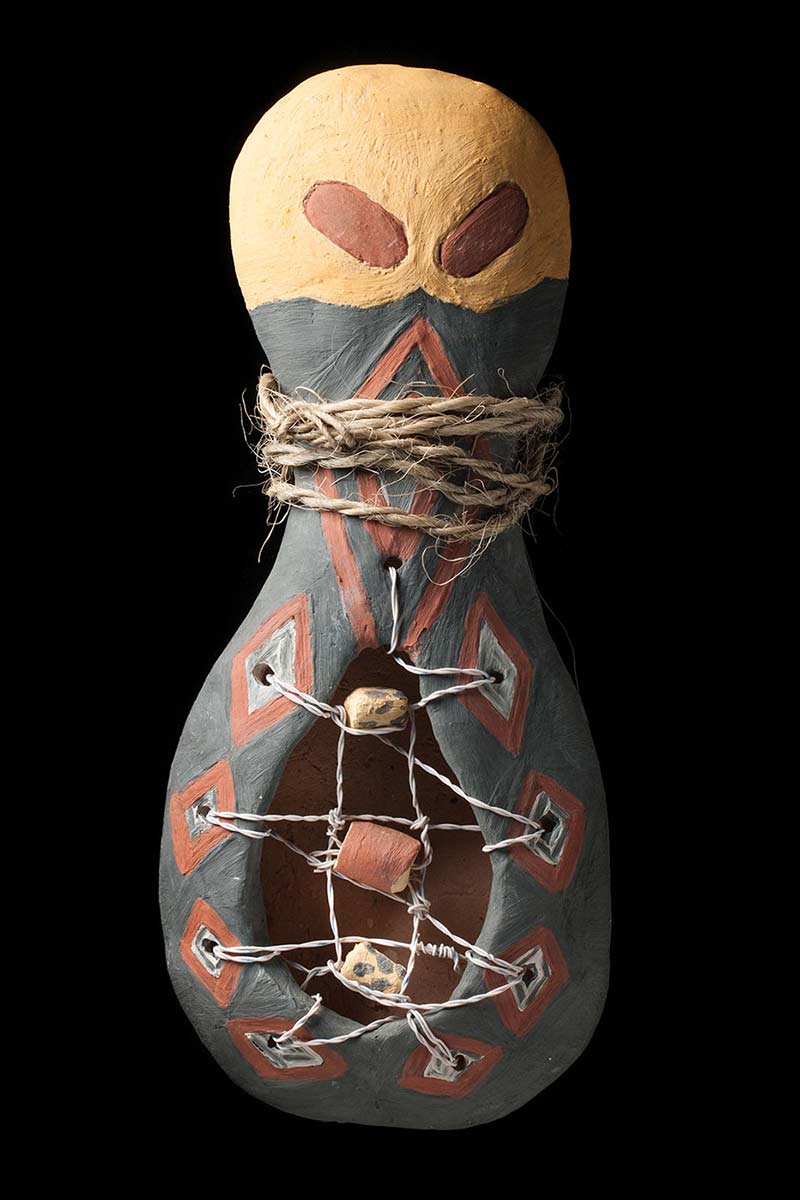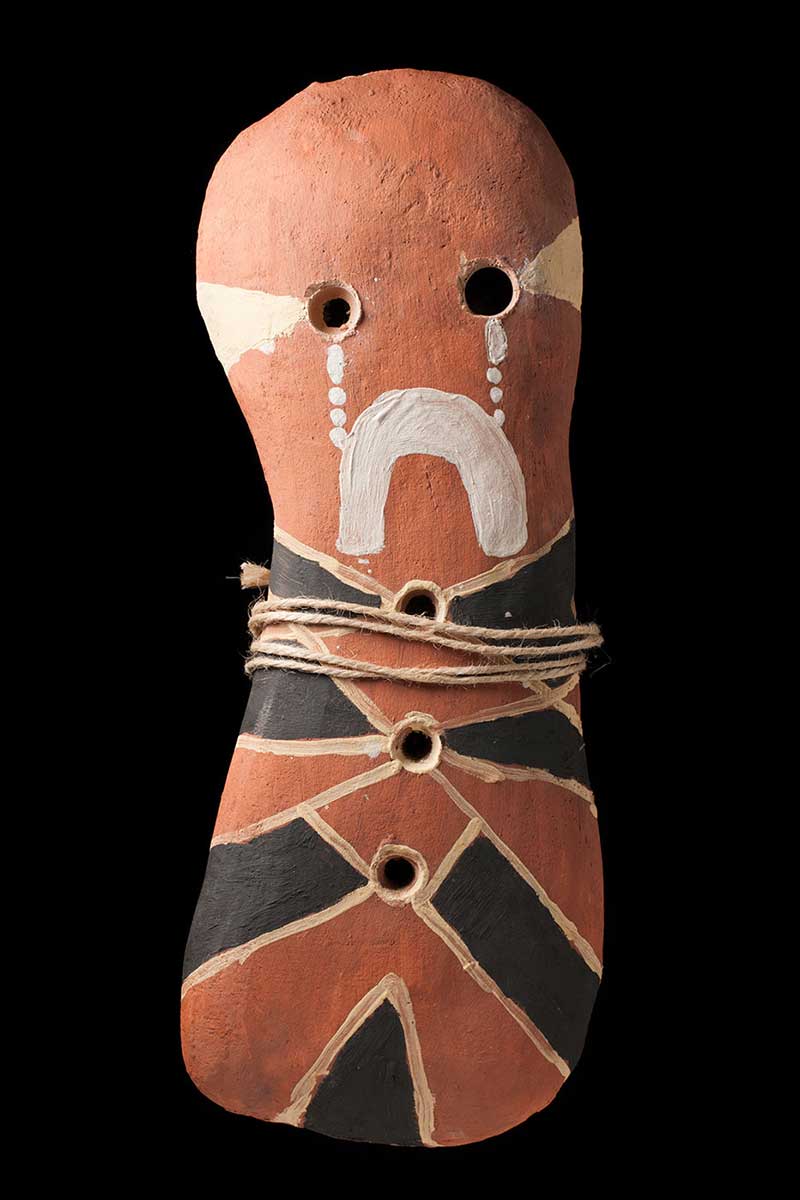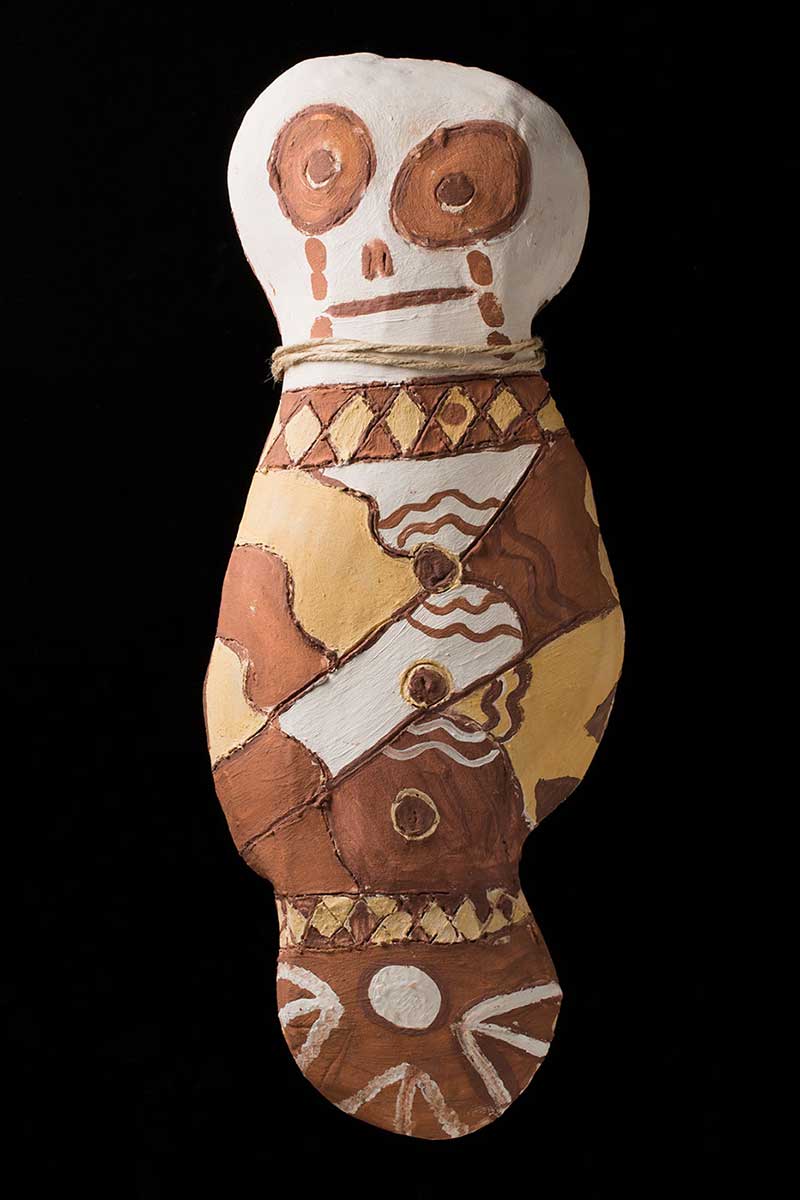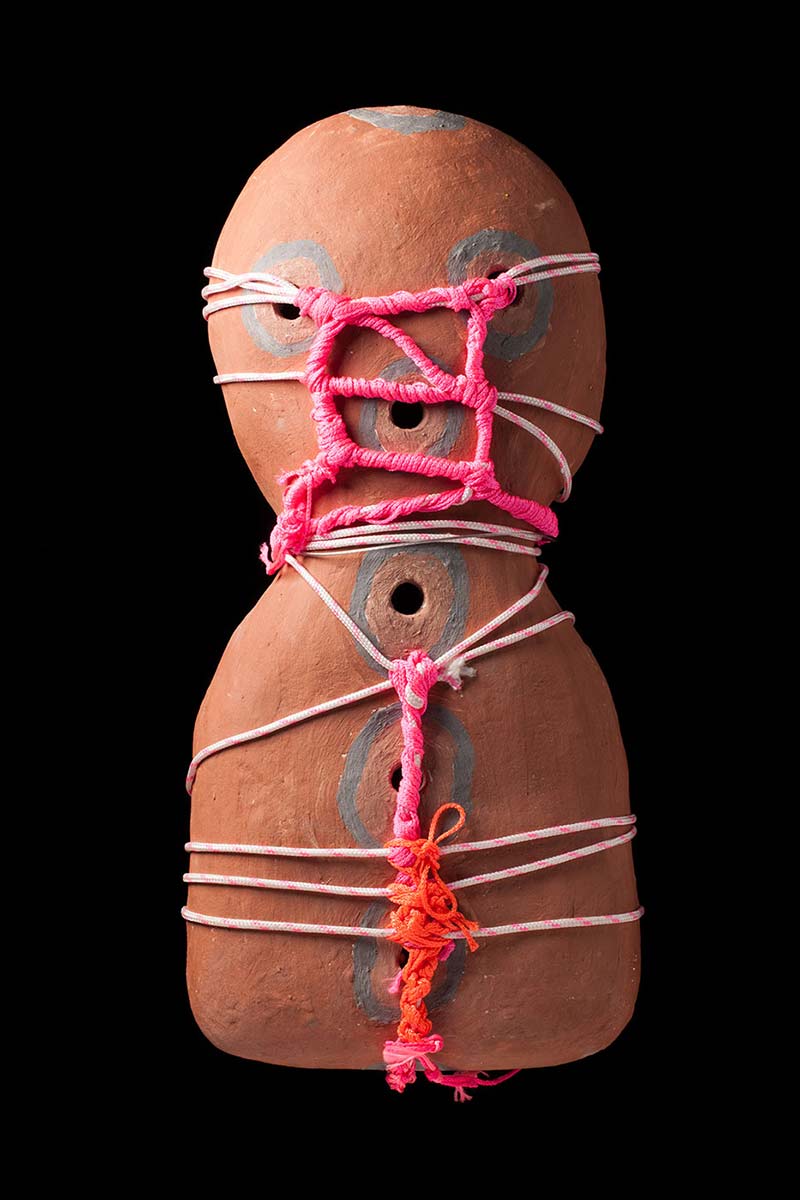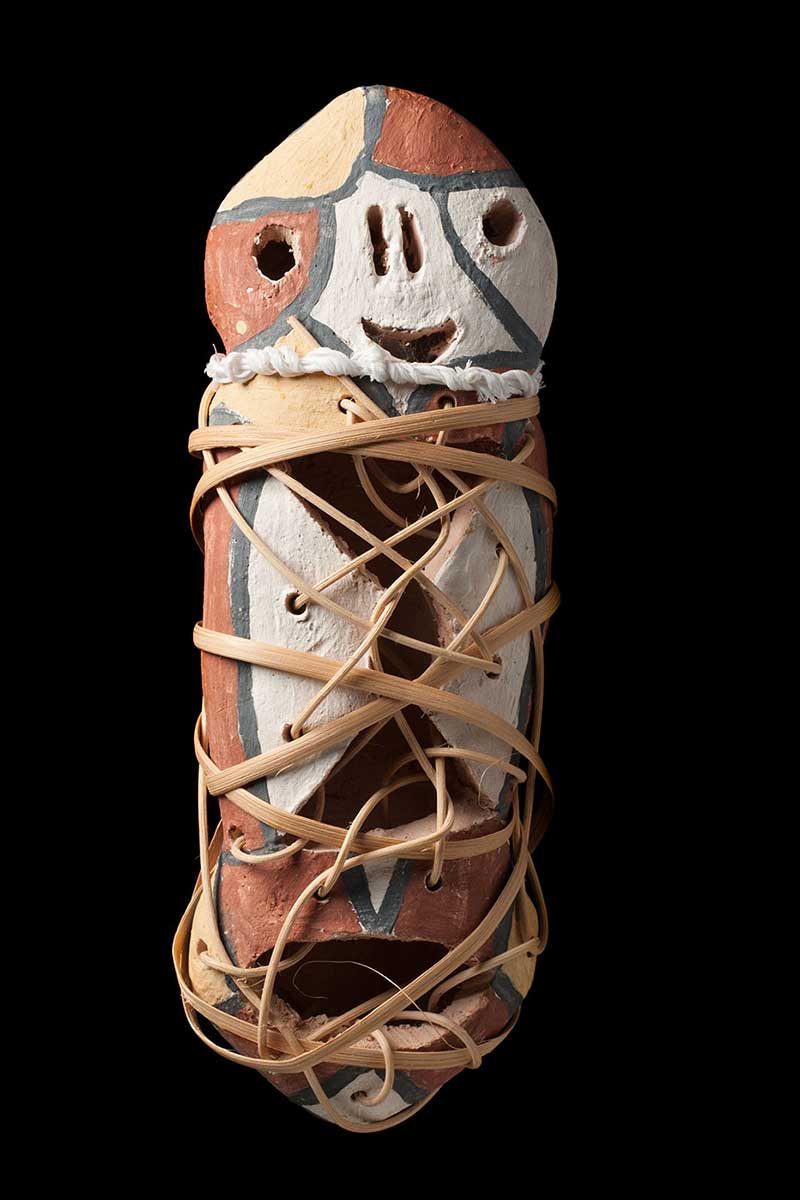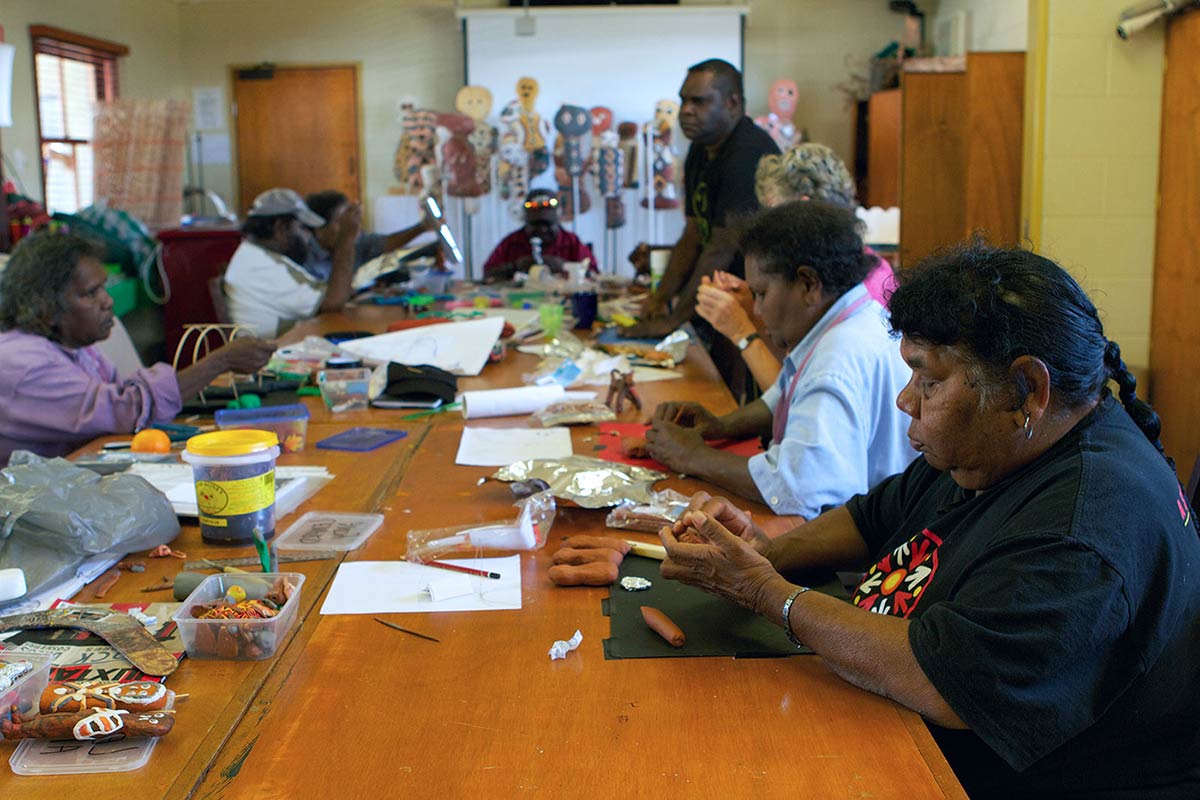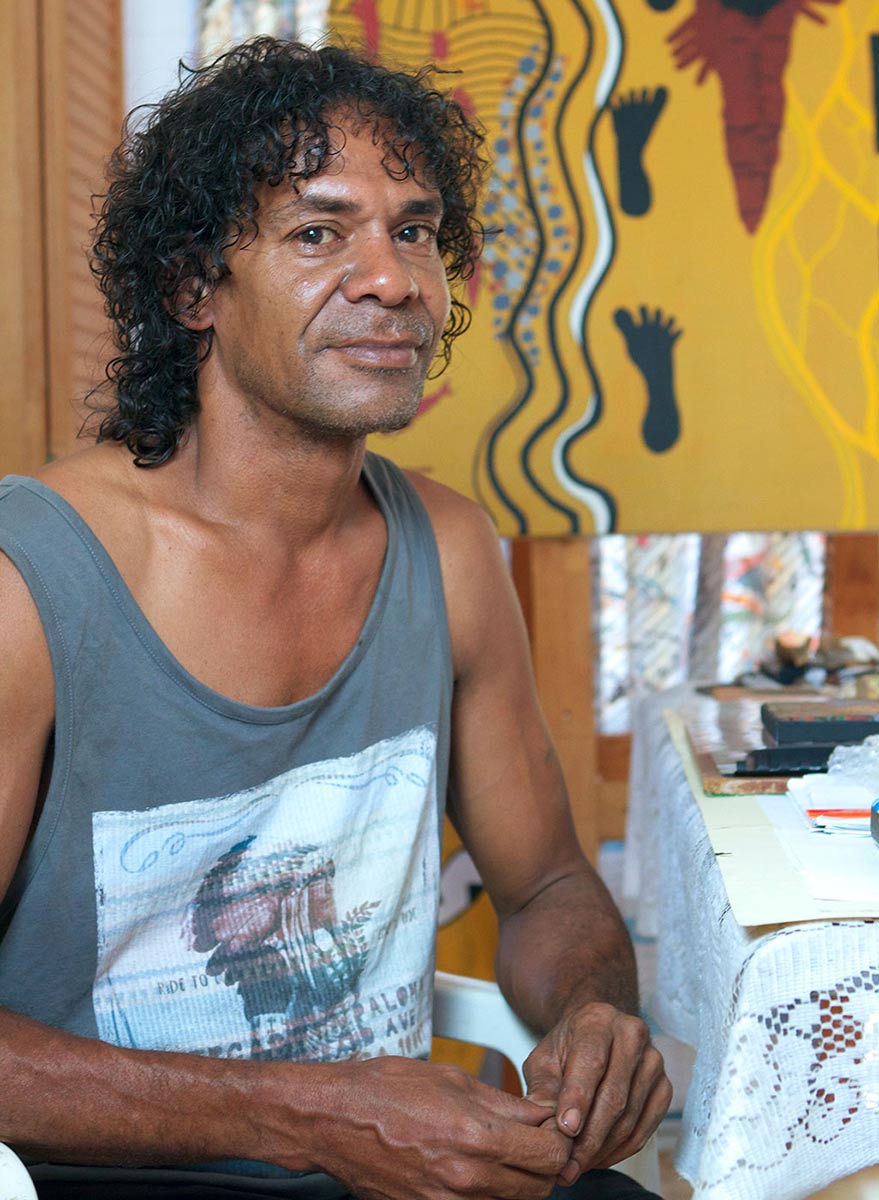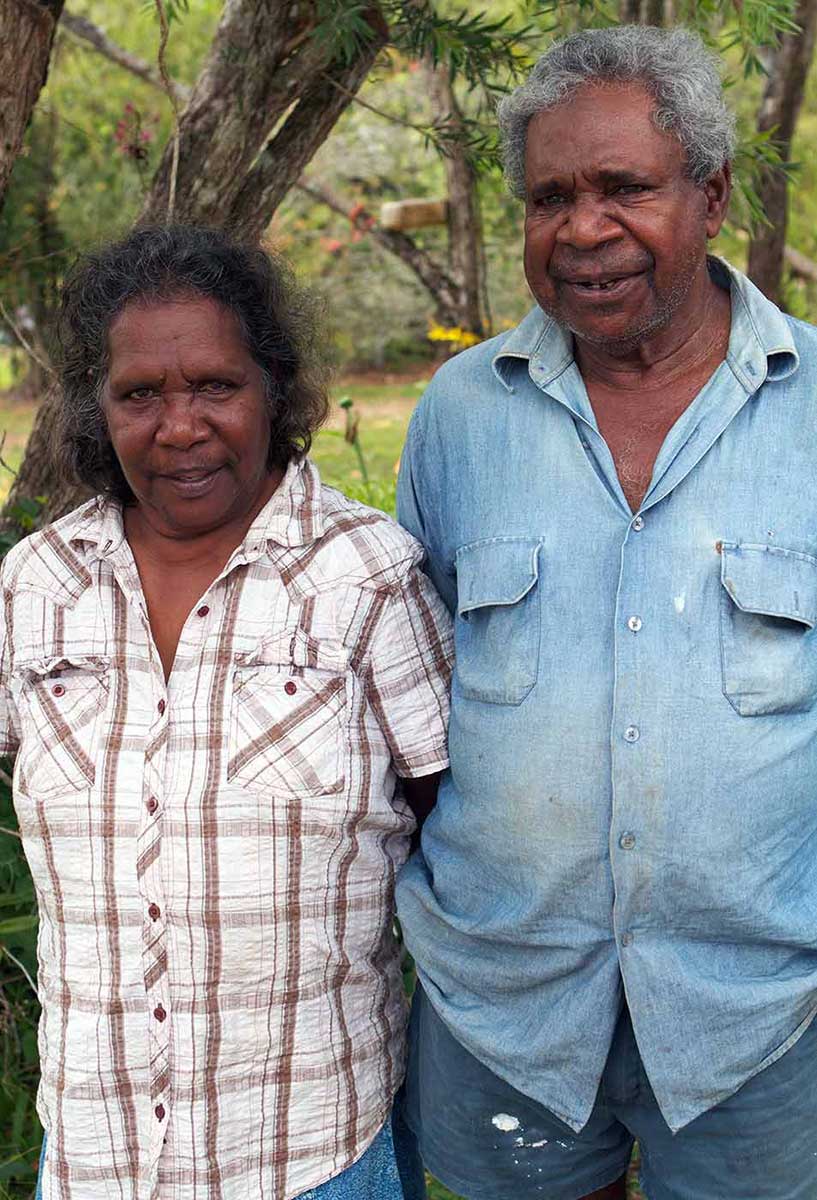Bandjin, Djiru, Girramay, Gugu Badhun, Gulnay, Jirrbal, Nywaigi, Warrgamay, Warungnu country
Guerilla warfare
Leonard Andy, Djiru traditional owner, 2012:
There was like guerilla warfare that was going on along the coast here and the islands ... but not many people know about ’em ... They think it’s in the past, you know, like 150 years is a long time ... It’s nothing, 150 years.
The rainforest peoples of far north coastal Queensland fought a guerilla war against colonists in the 1860s. Lives and cultures were violently disrupted, in an episode of history that continues to reverberate among local communities.
Scottish-born John Ewen Davidson collected the shield (opposite) and the sword club and basket on show in Encounters after he came to Rockingham Bay in 1866 to establish a sugar plantation. He began as a shocked observer of the violence of the occupation, yet within six months he was part of it.
Aboriginal people living in the area today have ancestors who died in these conflicts and they continue to struggle with a history in which whole families and clans perished. For people today, these objects remain tied to that painful moment in their history.
Ernie Grant, Jirrbal elder, 2012:
I could never understand how a person with Christian values could do that type of thing. Bring that fella back. I would like to have a talk with him.
Artists from the region still recreate and re-imagine traditional objects, invigorating their continuing culture.
Old objects
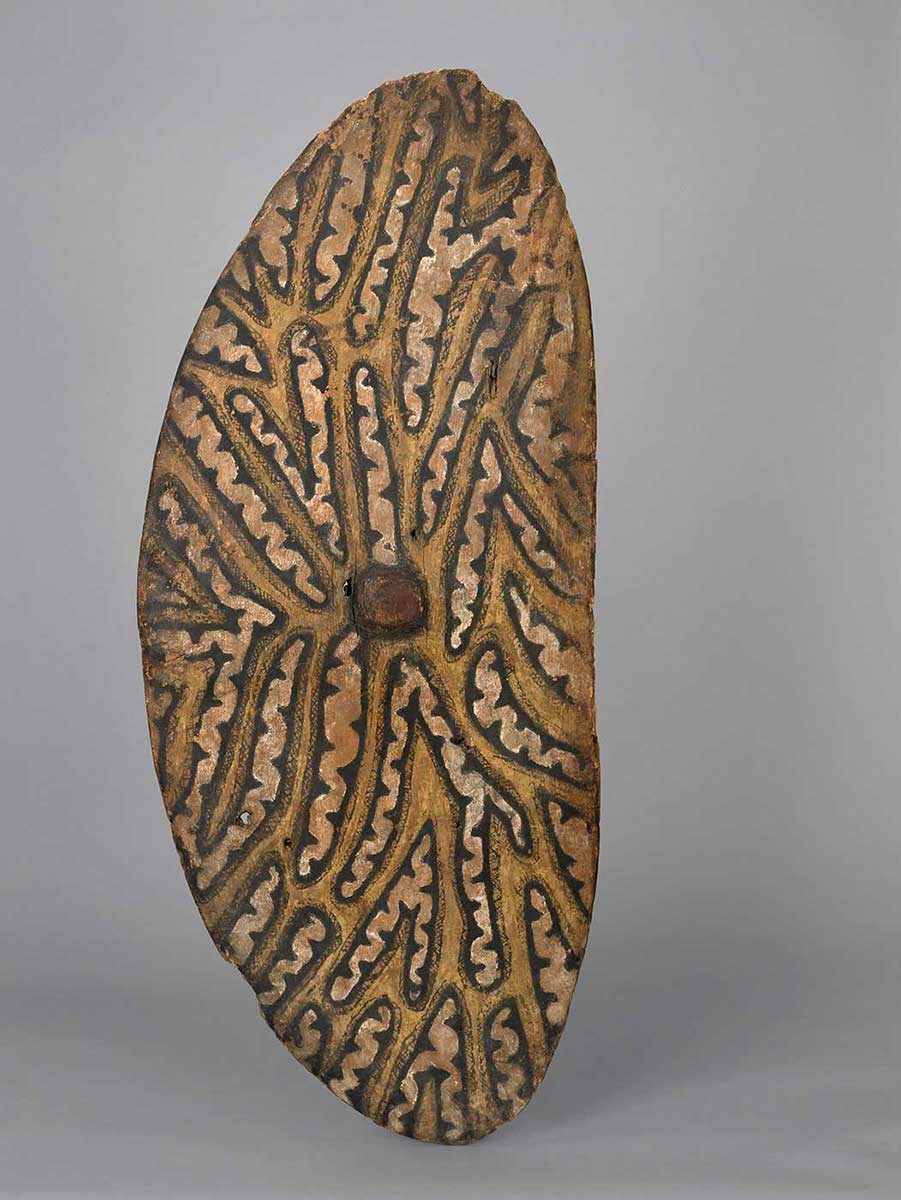
In 1872 Davidson presented to the British Museum 12 objects from northern Queensland, including this shield and the sword club and basket.
Davidson had arrived in Australia in 1865, and for two years unsuccessfully tried to establish a sugar plantation at Bellenden Plains, in the Rockingham Bay region.
When Davidson collected these items, it was a time of escalating conflict between settlers – aided by the Queensland Native Police force – and Aboriginal people.
New objects
Bagu are only found in the rainforest region of far north Queensland. Part of traditional fire-making equipment, they were treasured items for life in the rainforest.
Bagu have inspired local artists to make new sculptural forms using both contemporary and traditional materials. These bagu figures evoke the makers’ ancestors.
